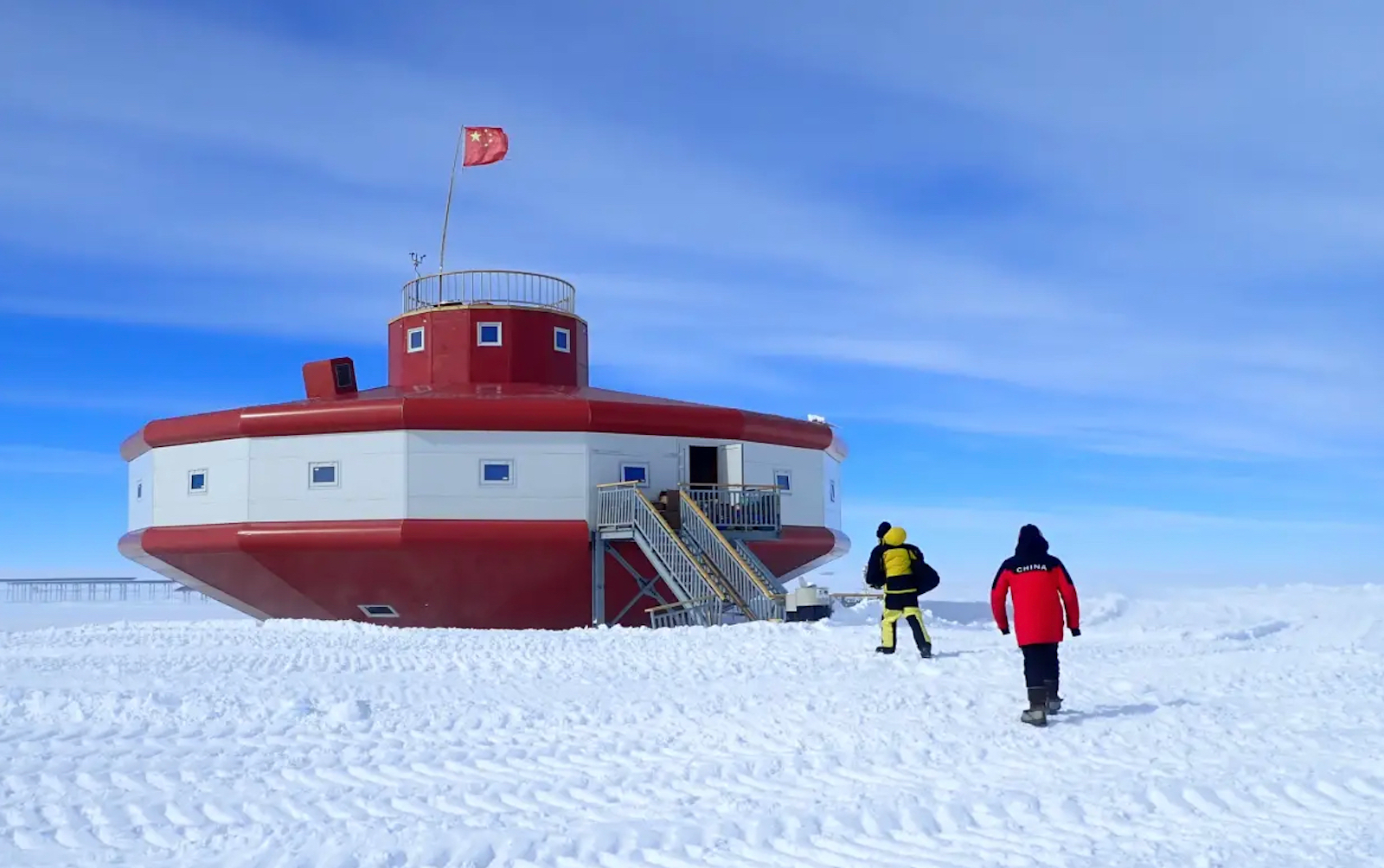China Aerospace Science and Industry Corporation (CASIC) had been selected to build a new ground station in Antarctica to serve China’s National Satellite Ocean Application Service (NSOAS).
Such news, reported on February 2, might have ordinarily set off alarm bells in Washington, but the Americans were too busy watching the large Chinese spy balloon drift above North America.
Since 2002, China has launched eight ocean observation satellites into orbit for various purposes including oceanographic analysis, resource exploitation, the study of coastal ecology and disaster monitoring. A ninth is scheduled to be launched this year. The new Antarctica ground station will facilitate the transmission of data from these satellites.
he new antennas and receiving terminal will be built at China’s Zhongshan scientific research base, also called a “station,” which is located in East Antarctica near Prydz Bay, facing the Indian Ocean. Zhongshan is one of five Antarctic research stations managed by the Polar Research Institute of China. In order of establishment, they are:
- Great Wall Station (1985), King George Island, South Shetland Islands
- Zhongshan Station (1989), Princess Elizabeth Land, East Antarctica
- Kunlun Station (2009), Princess Elizabeth Land, East Antarctica
- Taishan Station (2014), Princess Elizabeth Land, East Antarctica
- 5th Antarctic Station (working name: Victoria Land Permanent Base) (2022), Inexpressible Island, Ross Sea
Inexpressible Island was named for the inexpressibly miserable winter spent there by members of Robert Falcon Scott’s Terra Nova Expedition in 1912.
Zhongshan, Kunlun and Taishan are located in the Australian Antarctic Territory, which occupies about 42% of the continent. Inexpressible Island is located in New Zealand’s Ross Dependency, which includes the entire Ross Sea, including most of the Ross Ice Shelf and bordering coastal and inland territories in a wedge running to the pole.
Chile, Argentina, Norway, the UK and France also claim Antarctic territory. But none of these claims are recognized under the Antarctic Treaty, which all of them, as well as the US, China, Russia and 45 other countries, have signed. Twelve countries have research stations on King George Island.
There’s the geopolitical rub. Military personnel and equipment used for peaceful purposes today could be used for other purposes tomorrow. As Anthony Bergen of the Australian Strategic Policy Institute (ASPI) pointed out in an essay published in April 2020, the interpretation of this provision “has never been tested…but could be tested over time.”
And, “Given the track record Beijing has in moving rapidly on a broad front, as it’s done in the South China Sea, we need to be prepared to respond to a rapid increase in the speed and scale of China’s actions in Antarctica.
He adds that “Some academics point out that Antarctica could be useful for various command, control, surveillance and reconnaissance systems, as well as for basing satellite receiving and processing stations.”
Due to the extreme logistical challenges, military aircraft, naval vessels and satellite communications are essential to the Antarctic research activities of Australia, New Zealand, the US, the UK and other countries including China.
It should also be noted that China’s primary logistics base for activities in Antarctica is located in Hobart, Tasmania.
In an earlier report published by ASPI in August 2017, Professor Anne-Marie Brady of the University of Canterbury, Christchurch, New Zealand, wrote that “China has conducted undeclared military activities in Antarctica, is building up a case for a territorial claim and is engaging in minerals exploration there.”
The Center for Strategic and International Studies (CSIS), a Washington-based think tank, concluded in an October 2022 report that:

